 |
||||||
| John Chapman of Canada's Bent Audio had his cool TAP modular, passive, two-box preamp on active display. It can be configured to accommodate from 2 to 8 channels. The Model TX102 level-control transformers are configured for 2dB increments over most of their range. The remote command receives visible verification on the separate display unit, by having the blue bar advance in the chosen direction with each stepped click. 'Mute' lights up the ball below the lateral light sabre array. |
||||||
 |
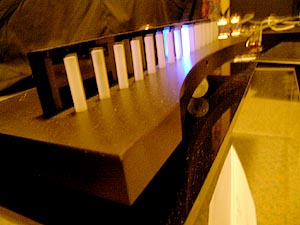 |
|||||
The base unit communicates with the display via the included fiber optic cable and incorporates 3 standard RCA inputs, up to two of which can be converted to XLR. RCA and XLR outputs are standard ($1,900 for the two-piece system). |
||||||
 |
||||||
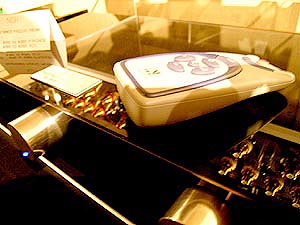 |
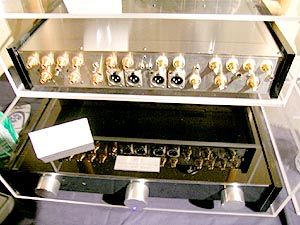 |
|||||
The simpler one-box passive NOH preamp uses the same low-impedance Stevens & Billington TX102 transformer attenuators with OCC copper windings and continuous-cast high-purity copper output leads. A Seiden 45SG stepped level switch selects the secondaries and up to 6 inputs can be accommodated, including an optional switched tape/headphone output. The casing is made from non-magnetic stainless and acrylic while the back panel features laser engraving. The optional remote obtains visual level setting confirmation via a blue LED inside the master control knob [$990 - $1,260 depending on extent of inputs, $225 for remote, $300 for silver-wound transformers]. |
||||||
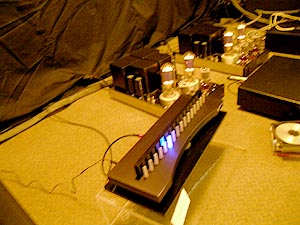 |
 |
|||||
A pair of prototype speakers had two of Furuyama-San's flat FAL drivers surrounding a ribbon tweeter. The 95dB-efficient wide bandwidth flat-diaphragm unit covers 40Hz to 10kHz which the Japanese designer uses in conjunction with the Heil air-motion transformer. Since the Heil patents expired, Mr. Furuyama has announced his own high-quality version for the near future. Bent Audio has taken on distribution of FAL drivers for the US and Canadian DIY community and will soon make available cabinet plans for a twin-drive design utilizing them as displayed. Once FAL's Heil unit debuts, it too will be marketed by Bent Audio. |
||||||
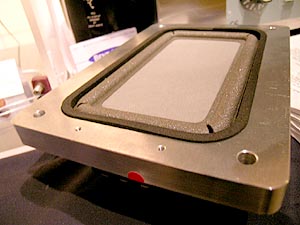 |
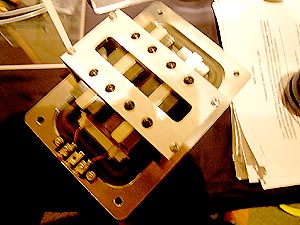 |
|||||
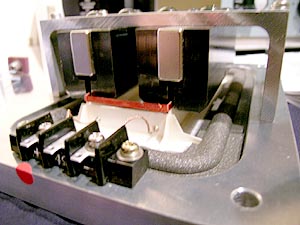 |
 |
|||||
Also on display was the $700 NYL ultra-sonic record cleaner which can dry-clean multiple vinyl discs at once, limited merely by the width of its opening. If ultra-sonics are good enough for the family jewels, they should do dandy on moldy vinyl. |
||||||
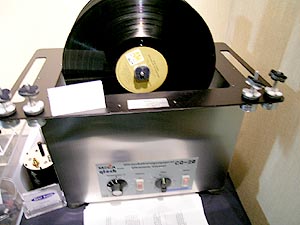 |
 |
|||||
Terry Cain of Cain & Cain threw those who consider single-driver speakers and single-ended tube amplifiers archaic anachronisms a majorly sliced fast ball not by making really good sound nor by showing with his personal Electron Luv Electronics. Nyet. For his digital front-end, he instead used a computer-based hard-drive server by Las Vegas/Nevada based Vince R. Sanders of VRS Audio Systems. That got people's attention. By eliminating a laser pickup, read errors and jitter and assembling the best sound cards, internal DACs, wiring and connectors possible, percussionist Sanders claims that his $4,000 digital Audio RPC sonically outperforms even ultra-expensive two-box digital transport/DAC combos. Terry visited the man in Las Vegas to put big claims to small ears. Seeing the (blue) light, he instantly purchased a unit on the spot, adding dryly that more than one of his dealers has followed suit since sans regrets. Computers, Fostex and SETs - talk about convergence! With 16dB of headroom, the internal gain structure is high enough to run the unit's analog outputs amplifier-direct. The aluminum casing can be anodized in any color desired or finished in wood grain. With provisions for four internal hard drives (currently 80GB serial ATAs but Western Digital has 250GHz hard drives on the burner), Sanders recommends a $899, 10" ViewSonic Airpanel as the wireless touchscreen interface to access the drive's uploaded software in the listening seat without interacting at all with one's main computer station. Uploads occur via the RPC's on-board Plextor drive which Sanders considers the ultimate audio extraction platform. In secure mode, 74 minutes of audio take 15-20 minutes to be imported, but 1st mode can reduce the protocol to 2-3 minutes. Current order lead times are 2 weeks and the designer works one-on-one with clients to customize the RPC according to their needs. |
||||||
 |
 |
|||||
 |
||||||
 |
||||||
 |
||||||
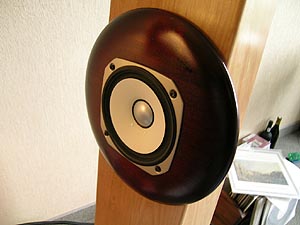 |
||||||
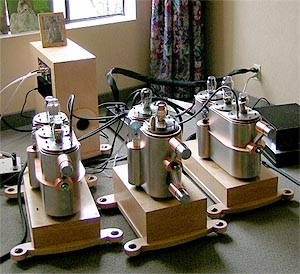 |
||||||
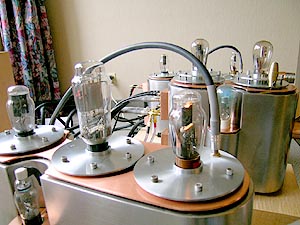 |
||||||
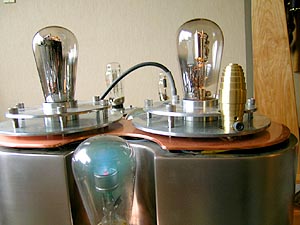 |
||||||
 |
||||||
 |
||||||
 |
||||||
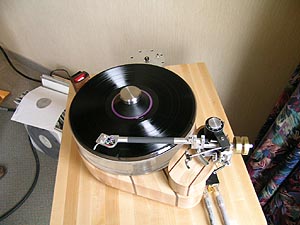 |
||||||
 |
||||||
 |
||||||
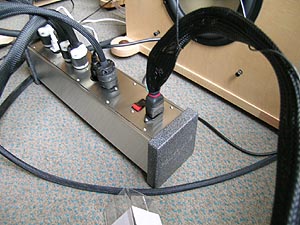 |
||||||
 |
||||||
 |
||||||
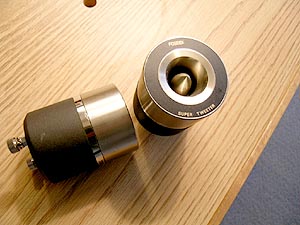 |
||||||
| With the big BENs trading places with the $1,500 near-field Abbys, our own Stephaen -- who owns the double-horns in their narrower and shallower configuration -- grumbled that he prefers the older Fostex driver sans super tweeter to Terry's current iteration. Meanwhile, Alan Kafton's WorldPower PowerWing provided filtered go juice while Cain & Cain's forthcoming subwoofer augmented the Abbys. Those can soon be optionally outfitted with a properly matching super tweeter as well - that is, once Terry has figured out the aesthetically most pleasing way to attach it. The Abbys as-is, make no mistake, are on of HiFi-dom's greatest speaker values. | ||||||
 |
 |
|||||
 |
||||||